Sue Stone is a time traveller in stitch. Using images from beloved family photo albums as inspiration, Sue juxtaposes the past and present to create real and imagined narratives.
Not only does working with old photos remind her who she is and where she came from, but her textile art also helps viewers make important connections among people, places and time.
Sue especially enjoys working with photos featuring unknown characters, using them as a device to portray the past in general, as well as key historical events. Those unknown, yet somehow related, friends and family provide rich personalities for Sue’s very human stories of joy, sorrow and everything in between.
The Unknown Statistic is perhaps one of the best examples of Sue’s ability to combine the past and present in a way that bears timeless meaning.
Starting with an intimate family connection, this piece expands to expose the challenges and horrific impact of war on families. The piece is rooted in the loss of her great grandfather in the First World War and blossoms into questions about how children and surviving spouses will find their way after such a loss.
History comes knocking
Sue Stone: The dates and events that surrounded this work are integral to its meaning. In 2014, the 62 Group of Textile Artists invited its members to respond to the town of Grimsby by interpreting the theme Ebb and Flow in its widest sense.
Not only did 2014 mark the centenary of the beginning of the First World War, but also my great grandfather Harry Conder’s death. I knew he had died during the war, as his name is on the memorial at Tower Hill in London.But this artistic challenge led me to research further into the circumstances surrounding his death, and what I discovered was both moving and remarkable.
Harry Conder was a skipper of the trawler Fittonia that had hit a mine and sank during the war’s first year on 2 September 1914. Harry and six others were lost to the sea. Ironically, in 2014, the ‘Grimsby’s Lost Ships of WWI’ project found the wreckage of his trawler in the Humber estuary.
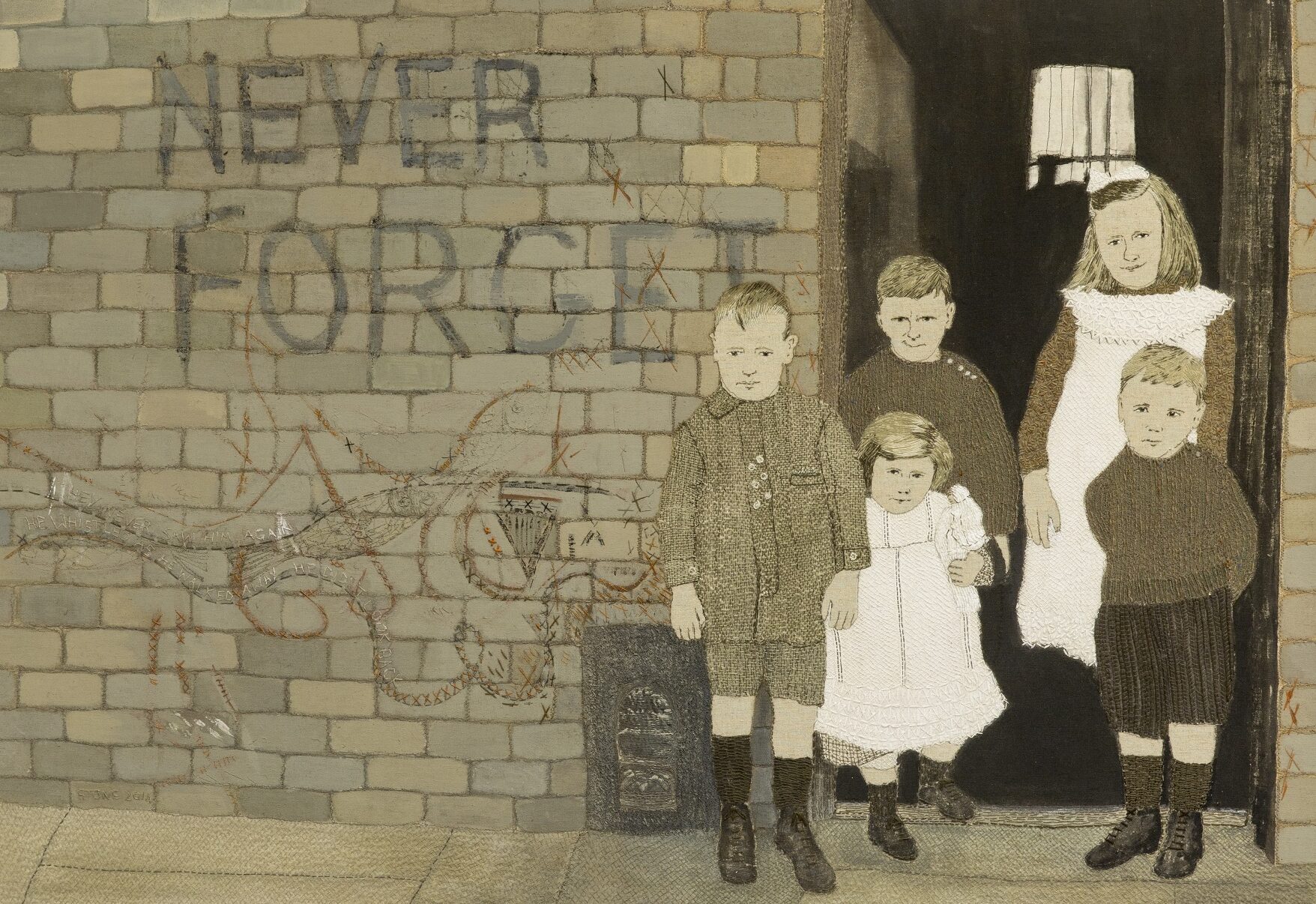

My great grandfather’s eldest son, Charles, also lost his life in the First World War. He died on 2 November 1918, just before its end. Ironically, he didn’t die from his war wounds, but instead from the Spanish Flu epidemic.
My research also exposed the fact my great grandfather was father to seven children, the youngest of which, George, was five. That made me wonder what happened to his children after his loss? How did his widow, Eliza, go on? And how many more children were left fatherless by the First World War?
Sadly, my research at the local and national archives yielded a decided lack of accurate information, which led to my naming the work The Unknown Statistic. Their young lives went on but were changed forever.
An imagined backstory
So how would I tell the stories of these unknown children?
My number one source for inspiration has always been my family album. Every time I study its pages, I’m reminded of the passing of time and the transience of life. My mum, dad, grandparents, sister, husband and children have all been featured in my work.
Working with the family album is a way for me to remember who I am and where I came from. To that end, many of my works juxtapose disparate images from the past with those from the present to make a connection among people, place and time.
By presenting two specific points in time, I create the illusion of time travel that asks the viewer to imagine what happened in between.
I’m especially intrigued by photos featuring unknown characters. I think everyone’s family album houses photos of people whom no one seems to know.
To that end, I remembered a small image I had seen in my husband’s family album of some unknown children. I had been looking at that image for several years, wondering how I could use it in my work. It had a poignancy to it: the children look like they are watching someone walking away.

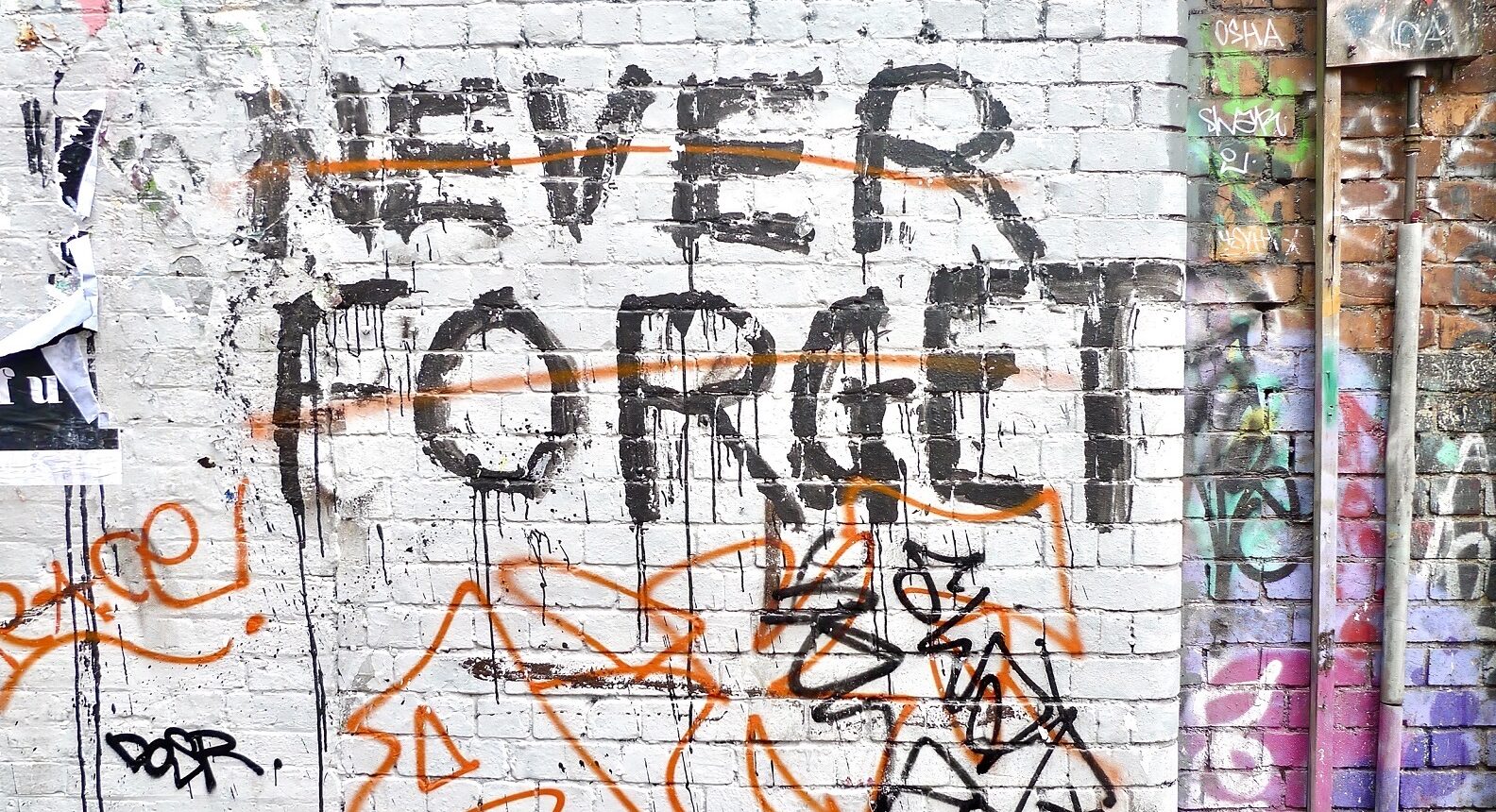
I later came across a photograph I had taken in the East End of London featuring simple wall graffiti which said ‘Never Forget’. That’s when it occurred to me to upload and combine the two images in Photoshop to tell the story. The image of the children became a device to represent a group of universal children, whose innocent lives were forever changed by the loss of their fathers.
The children stand in the doorway, watching and listening for their father. He’s a skipper and Grimsby fisherman whose trawler has been commissioned by the government to serve as a minesweeper. The shadow of their mother can be seen in the background, as she couldn’t bear to come and watch.
A fisherman doesn’t turn to wave to children as he leaves, as that was deemed bad luck. And while he might whistle as he left, he’d stop once he boarded the trawler to avoid ‘whistling up a storm’. Sadly, those traditions wouldn’t protect the fisherman and his crew, and his children would never see him again.
Making this piece was an emotional rollercoaster because it made me think long and hard about my great grandmother Eliza’s life and the hardships she endured as a widow. Having lost both her husband and son Charles, she somehow found an inner strength that enabled her to bring up the rest of her family on her own.

Layering stitch and paint
I used a cotton/linen Japanese Zakka fabric in a natural colour as my base material. I chose that fabric because it has a smooth finish which paints well, and in its natural state, it’s a suitable flesh colour. All the stitchwork is DMC stranded cotton, along with some wool donated by a friend.
I also used a combination of fabric paint and acrylic paint of various makes. I use fabric paint for colours I want to be absorbed by the fabric, and acrylic paints for their ability to sit on the fabric’s surface to create texture.
Once I had my final composition, I made a very simple drawing to use as a guide showing where everything goes. That drawing was then reversed and printed out in A4 tiles. The tiles were then reassembled and transferred to the fabric using free-motion machine stitching from the reverse side of the fabric, making the stitching easier to remove on the front.


After the stitched guide was in place, the background was given a layer of paint. And then the hand stitching began. All of the machine stitching was removed and replaced with hand stitching.
I used straight stitch, cross stitch, back stitch and needle weaving on the figures.
I then continued to build up the image using layers of hand stitch, machine stitch and paint. There are areas where I paint underneath the stitch to build up texture and some painted layers over the stitching to help knock it back.
My biggest challenge was creating the brick wall background. I had painted it a terracotta red colour, but the colour dominated the figures in the doorway and destroyed the atmosphere of the work.
Two days before the work was to be submitted for the 62 Group exhibition, I made the brave decision to overpaint the terracotta with a khaki green/brown colour, and it transformed the work. Be assured, it was quite a challenge to paint around the already completed stitched figure of the boy on the left!
I also painted over the ‘Never Forget’ lettering to give it a fading effect, like the children’s memories of their father. I finished the piece by adding more stitching on top of the painted wall in burnt orange and rust.


The story’s power
Visitors to my exhibitions are really interested in the stories behind my narrative pieces, and this work was no exception. It particularly provokes strong emotions from those whose families share similar stories. Telling the story always provides a connection between the viewer and maker.
The fact I first showed this work in my hometown of Grimsby and the surrounding events being honoured made it all very special. Grimsby, Lincolnshire, is situated on the east coast of England, and the 62 Group of Textile Artists chose two very different venues for the exhibition.
The first was a beautiful historic building called Grimsby Minster. The building is more than 900 years old, and that’s where my work was exhibited. The other venue was the Muriel Barker Gallery at the Fishing Heritage Centre which was a modern, white walled gallery.
I have shown The Unknown Statistic in many exhibitions since its conception in 2014. It never loses its emotional power for me, and I usually find myself with a tear in my eye when I recount its story. It remains one of my favourite pieces of work.
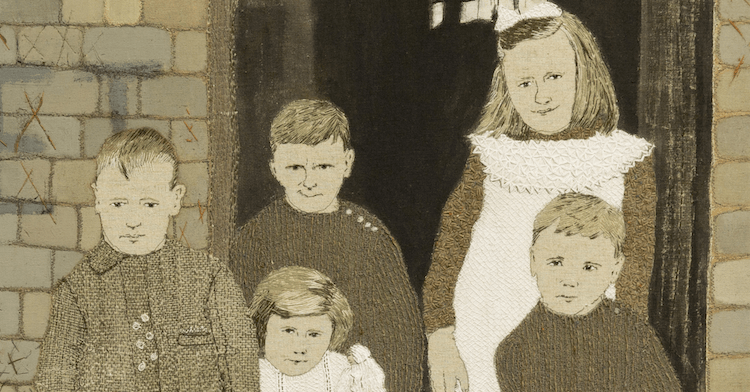
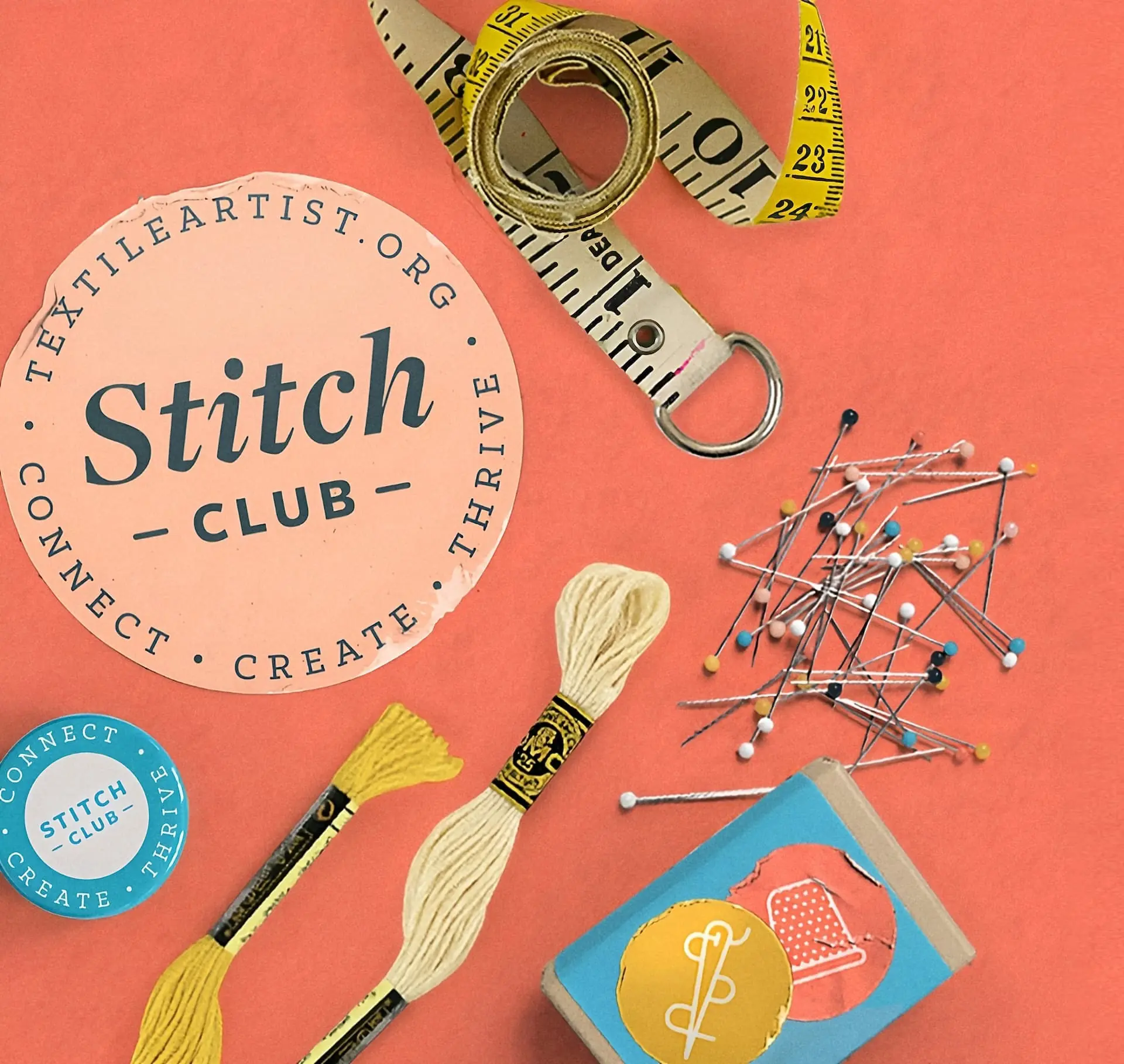
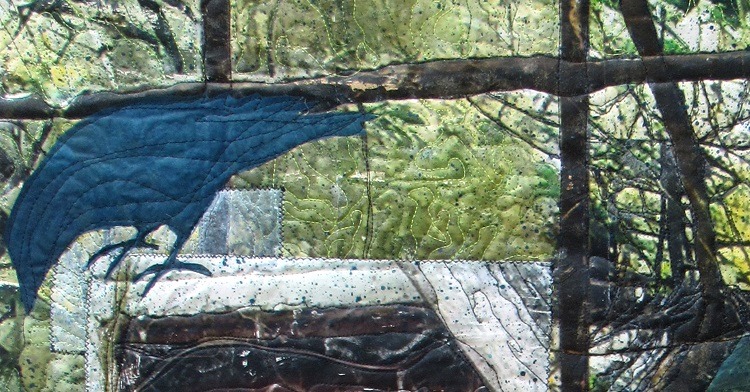
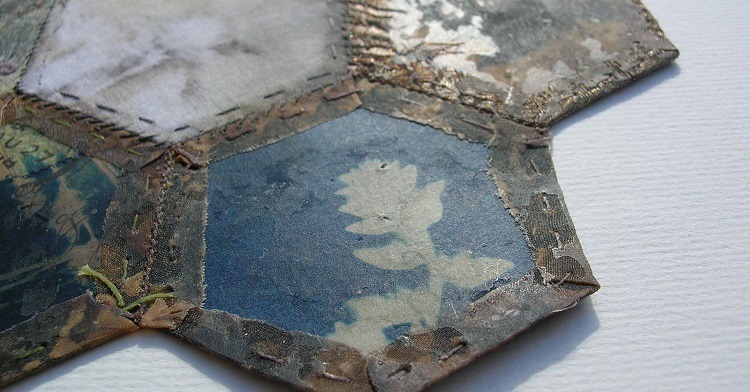
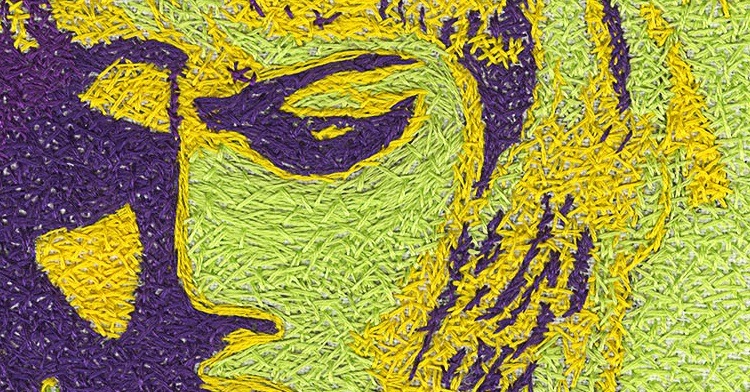
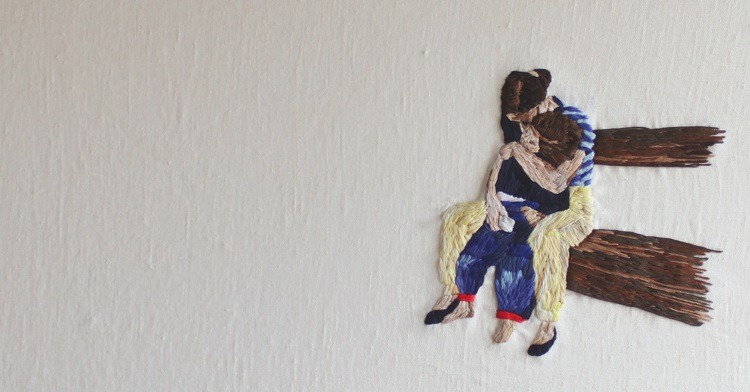
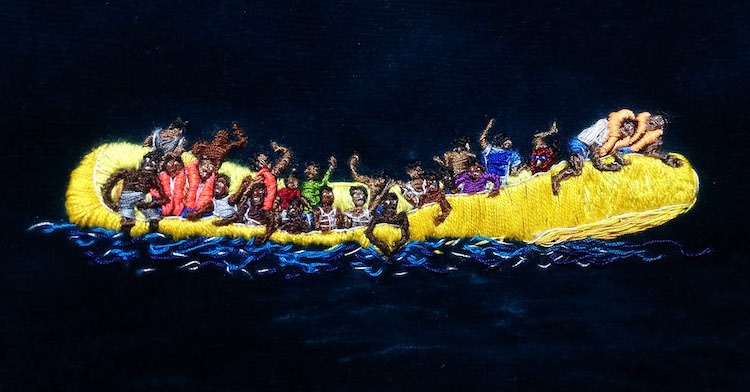
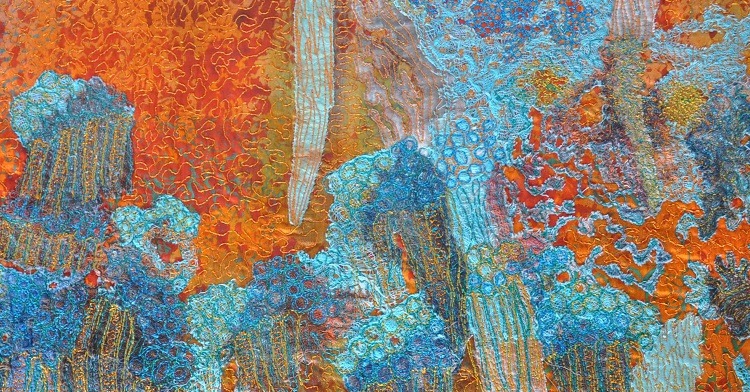
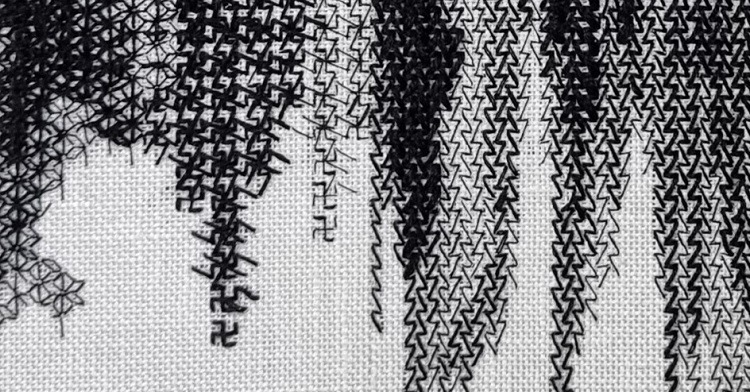
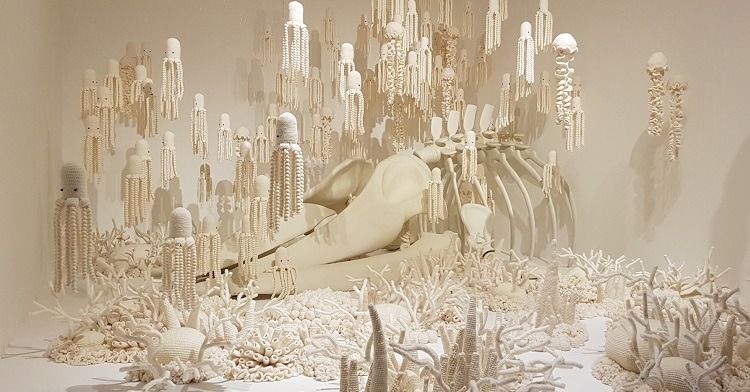
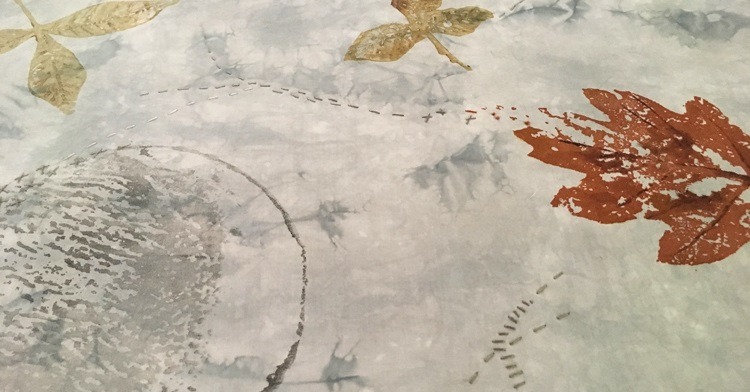
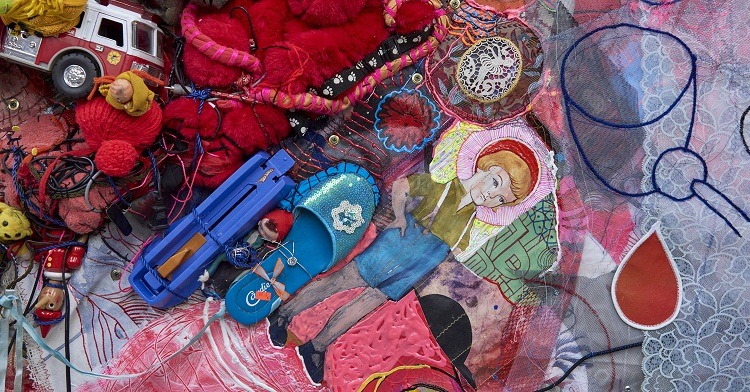
24 comments
Lindsay Olson
Sue Stone, you are amazing. Thanks so much for sharing
Gill
Sue, thank you for sharing the process of this piece. Just love it when
the subject is connected to social history. It is such a moving story but relevant to many of us. Whilst researchig my own family history I found a piece out of a local paper which was a reminder of your story and realising why and where we get our resilience to survive. You’ve inspired me to visit this as project.
pat
So moving, feeling and thought-proving, what did happen to those poor children, were they able to stay together or separated. many ended up in the workhouse or orphanage as they couldn’t afford to be kept.. Sue’s finished piece is stunning. Fascinating to read Sue’s creative process, from the inspiration, personal and social historical connection, photoshop to making. Fabulous, thank you so much for sharing.
janet mcchesney
I love how the build up of many materials is like the levels of the history of the painting….the past and the present interwoven , what we see and what happened….thank you for the inspiration and the process.
Linda Muat
I wanted to cry when I read the story behind the art work. The piece has been so beautifully worked that it lifted my spirits, they and their story lives on thanks to your Mum.
Linda Muat
Sorry I was writing as if to the brothers who run this site. It should have said, thanks to you Sue.
Sharon Avery
You are an amazing artist. Thank you so much for sharing your process!
Vicky
Just fantastic, so inspirational, thank you!
Jill Smith
Your work is inspiring. Thank you for sharing your story.
iolanda di giambattista
grazie per la condivisione, mi sto appassionando sempre di più all’arte tessile, mi piacerebbe tanto fare qualcosa…
M
Incredible piece!
Thanks for sharing your process!
Chantal Guillermet
Beautiful work and beautiful story behind. Thank you for sharing this.
Ann Vollum
Really interesting to see the process that you went through to make this wonderful piece.
Valerie Gardiner
Thank you for sharing your process Sue, not only a moving story but a wonderful result, I’m truly inspired!
Jane Parten
Wonderful! Thank you for sharing the process used to achieve this inspirational piece of textile art. The story behind the photo provides meaning which was very interesting.
Niki McDonald
The graffiti and WW1 image of the children left fatherless is the perfect combination to show the universal theme of family and loss. Sue’s work is tangible and relevant to today and offers an emotive and engaging image that makes my heart feel the nostalgia of times gone by. I enjoyed and am in awe of the process and thank you for sharing it. Niki x
Virgiinia
Its wonderful the way you keep an historical memory, congratulations for your work
Maria
Wonderful!
Thank you for sharing your process. I love your idea of free machine stitches on the reverse for transferrin the pattern. It’s the solution to a technical problem I was pondering. 🙂
Gwyneth Williams
Thank you for your kind reply to my email. Your work is inspirational to me and yet it also seems unachievable as I do not have any formal training, but I am not deterred and will look forward to your book later in the year.
Celia
I enjoyed immensely learning about the back story and the creation process of this piece. Thank you for this feature.
jeanne gray
the spark of an idea. what a wonderful journey following her path of the evolution of her work., great article!
Rachel Biel
Such a moving story! Fun to see the process, too.
Barbara Shapiro
Wonderful and well thought out presentation by an artist with mastery of technique and sensitivity to the imapct textiles can have to convey concepts and deeply felt emotions. I just loved this article!
Cas Holmes
Wonderful link between space, place and memory Sue with a thoughtful description of technique which validates and make your own the process of technology as a creative medium.